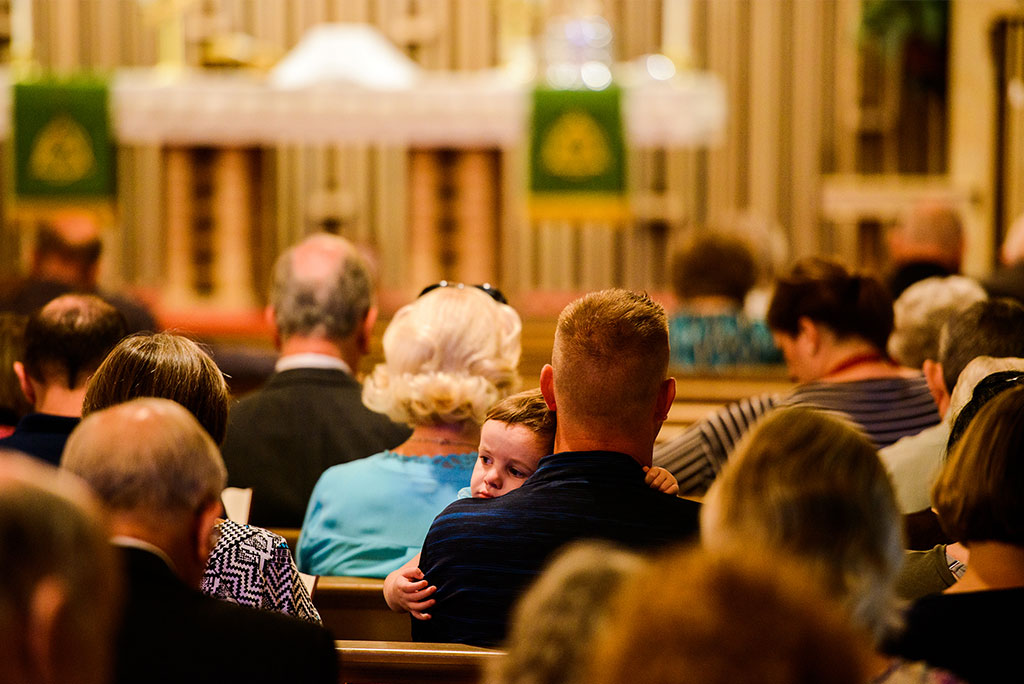
Helpful as they are for painting a picture of The Lutheran Church—Missouri Synod, the church body’s annual statistics would be more accurate if all LCMS congregations provided them.
The response rate for 2016? About 70 percent of the Synod’s 6,100 congregations — far below the “unanimous participation” called for in LCMS Bylaws.
In some of the Synod’s 35 districts, the rate was under 40 percent, but in the Iowa East, Iowa West and Michigan Districts more than 90 percent responded, according to LCMS statistics staff.
As another reporting period approaches, Synod Secretary Rev. Dr. John W. Sias encourages all LCMS congregations to watch their mailboxes for a letter that should arrive in early January.
The mailing — a cooperative effort from Sias and the Synod’s office of Rosters, Statistics and Research Services — provides information on how congregations can submit online their 2017 figures for such things as membership, worship attendance and contributions from members.
“Congregational statistics help us understand demographic trends in our congregations, plan present and future ministry efforts, and assign equitable delegate and region representation,” notes Sias. “While there’s obviously much, much more to congregational health than these numbers, they are an undeniably important piece of ‘how we’re faring’ across the Synod.
“Full participation by our congregations would clear the blind spots in our analysis, which otherwise we have to navigate carefully.”
Besides contributing to an up-to-date snapshot of the LCMS, congregations’ annual statistics are used to compute circuits’ eligibility to send delegates (or their need to combine with another circuit or seek an exception if they have fewer than the required 1,500 confirmed members) to Synodwide conventions held every three years. The next LCMS national convention is planned for July 20-25, 2019, in Tampa, Fla.
Statistics also may be used during disasters. For example, a map showing 74 LCMS congregations in the Houston and Corpus Christi areas that were in the path of Hurricane Harvey — as well as their membership figures and contact information for their pastors — was shared with LCMS Disaster Response two days before the storm made landfall.
Membership
The 70 percent of congregations that reported their statistics for calendar year 2016 account for more than 80 percent of the Synod’s baptized and confirmed members.
For congregations that did not supply their 2016 membership figures, their most recent reported membership numbers are used.
With that in mind, here are last year’s totals for:
- baptized membership — 2,017,834 (down by 2.1 percent).
- communicant, or confirmed, membership — 1,584,251 (down 1.5 percent).
Despite overall Synod declines nationwide, five LCMS districts — Iowa West, Michigan, Mid-South, Nebraska and New England — reported gains in total confirmed membership in 2016.
Worship attendance, giving
Among congregations that reported statistics for both 2015 and 2016, average worship attendance dropped nearly 3 percent, resulting in a new Synodwide average of 137 worshipers per congregation per week.
While the membership trend lately has been downward, giving to the church has consistently been on the rise, according to LCMS statistics staff.
For 2016, total regular giving rose from $1.41 billion to $1.43 billion.
Looking only at the 4,243 congregations that reported statistics for last year, average annual giving per communicant member is up 1.5 percent, to $952 — a rate of increase that is higher than inflation.
Congregations also reported an additional $600 million in other sources of income — generated most often by school tuition — bringing total income for congregations to $2.03 billion.
At the same time, at-home expenses for congregations also are on the rise, reaching an all-time high of $1.83 billion for 2016 — an increase of nearly $47 million over the previous year.
More seniors, fewer young adults
Determining the age distribution of LCMS congregation members began in 2013, when the Synod began testing a method for collecting this data.
“After testing collection methods and tracking results over multiple years, these numbers have been validated for internal consistency and corroborated by data from external studies,” said Ryan M. Curnutt, senior research analyst with LCMS Research Services.
The result, Curnutt said, “confirms widely held beliefs that there are larger-than-expected numbers of senior adults in LCMS church membership” (24 percent, compared with 15 percent of the U.S. population) “and a significant shortage of young adults ages 19 to 35” (17 percent, compared with 22 percent).
“Further study of this disparity is already taking place,” notes Curnutt, who is working with LCMS Youth Ministry to address that concern. Others, including Fuller Theological Seminary, The Barna Group and the Pew Research Center, also have conducted studies on the subject across all denominations, he said.
A call for more participation
Even with the Synod’s less-than-ideal 70-percent response rate for congregations that report their annual statistics, Sias noted that “typically, 95 percent of LCMS congregations have responded at least once in the last three years” and “larger congregations tend to participate more frequently,” making the yearly endeavor worthwhile.
But “more regular participation means more readily usable data,” he acknowledged, and he hopes to see increasing participation.
“The fact that three districts’ congregations responded at more than a 90-percent rate is encouraging to me,” Sias told Reporter. “I know that took a lot of work in the congregations and no small encouragement from the district offices, but I am hopeful that we will see a broader effort toward the unanimous annual participation expected by the convention.”
For more statistical information about The Lutheran Church—Missouri Synod, see The Lutheran Annual 2018 (available Dec. 5 from Concordia Publishing House) and the November “State of the Synod” issue of The Lutheran Witness.
Posted Nov. 2, 2017





It seems to me that the response rate might be a referendum on the overall satisfaction with synod.
The smaller LCMS churches need to band together, either through consolidation or informal networking across congregations. I recently ran the Detroit marathon for United Way and was amazed to see the suburban mega church teams competing in the marathon — large numbers of people in colorful matching shirts, with impressive fund raising totals for great causes. Lutherans need to keep up with that, or our membership will continue peeling off to the mega church Calvinists.
I’ve seen something like this in other organizations: Headquarters wants data for high-level planning and budgeting, but the benefit to the local office is neither immediate nor direct, and local concerns are always demanding attention. So the quality and timeliness of the data provided is lacking. Still, one might reasonably expect that members of an organization that purportedly pursues virtue and integrity — a church body, for instance — would largely heed their own bylaws or, if the administrative burden is excessive, change them.
I’m going to guess the reason the younger people are not coming to church is what they learn in school and collage. Its anti God pro science
The article did not say when this survey went out, but if it is like other questionnaires from Synod, it was likely long, incredibly detailed, and complicated. Please take a lesson from industry, the best survey is one that will have excellent participation, can be followed up by phone and assistance given, and gives raw data needed. Results are available quickly, addressing the perceived issues, and identifying trends that maybe addressed not ignored. Don’t spin the results, learn from them! Don’t try and validate Synod actions, recognize mistakes, change and adapt, and go forward. The Lutherans who are farmers and ranchers know this all to well. We have had to change, adapt, meet market conditions while staying true to our core values. Get with the program, address the obvious, or be content with trends and be ready to have wholesale belt tightening at all levels of governance! Look at our churches, the ones that normally are the worker bees have aged and can no longer work. We have brought in our farm crew to do the heavy lifting on several projects.
We are seeing major decline and change in demographics in N Idaho. Lots of locals leaving or dying and the new people coming in are mostly weekenders: coming to town Friday night, playing all day Saturday, and heading home Sunday.
It poses a major challenge on how to sustain the congregation as our elderly people move on when the new people moving in are only here a couple of weekends a month and come to play, not go to church…..